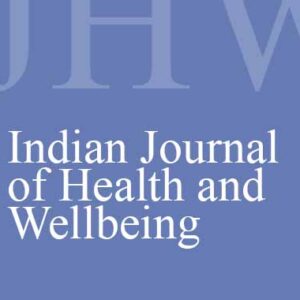
Influence of breast feeding practices and immunization status among under five children suffering from acute respiratory infection
Original price was: ₹ 222.00.₹ 200.00Current price is: ₹ 200.00.
Pages: 100-102
Gangadhar Mirji (Department of Pediatrics, S N Medical College, Bagalkot, Karnataka, India)
K.J. Shashank (Department of Community Medicine, SBMPMC, Bijapur, Karnataka, India)
S.W. Shrikant (Department of Pediatrics, Mahadevappa Rampure Medical College, Gulbarga, Karnataka, India)
Dharmanand Reddy (Department of Pediatrics, Shridevi Institute of Medical Sciences, Tumkur, Karnataka, India)
Children below 5 years constitute 14% of the total population in our country. They are vulnerable group deserving special health care. Children are considered to be susceptible to the host of disease and infections of respiratory tract are the most common cause of morbidity and mortality in young children. Acute respiratory infection is a leading cause of morbidity and mortality in under-five children in developing countries. Hence, this study was undertaken to identify various modifiable risk factors for acute lower respiratory tract infections (ALRI) in children aged 2 months to 5 years. Hospital-based case–control study conducted at Basaveshwar and Sangameshwar General Hospital, both attached to MR Medical College, Gulbarga. The study period was 1½ a year from January 01, 2012 to June 30, 2013. Totally 200 ALRI cases fulfilling WHO criteria for pneumonia, in the age group of 2 months to 5 years were interrogated for potential modifiable risk factors as per a predesigned proforma. 200 healthy control children in the same age group were also interrogated. In 67 (33.5%) cases, prelacteal feeds were given compared to 28 (14%) controls. There was a significant association with odds ratio of 3.09 (95% confidence interval for prelacteal feeds. In 48 (24.0%) cases, exclusive breast feeding was given for <4 months, in 40 (20.0%) for 4-6 months, and in 26 (13.0%) cases breast feeding was given for more than 6 months. Socio-demographic factors represent the ultimate determinants of a large proportion of the burden of ALRI; these can be tackled through effective health education of the community, increased access to immunization and measures to improve female literacy.
Description
Pages: 100-102
Gangadhar Mirji (Department of Pediatrics, S N Medical College, Bagalkot, Karnataka, India)
K.J. Shashank (Department of Community Medicine, SBMPMC, Bijapur, Karnataka, India)
S.W. Shrikant (Department of Pediatrics, Mahadevappa Rampure Medical College, Gulbarga, Karnataka, India)
Dharmanand Reddy (Department of Pediatrics, Shridevi Institute of Medical Sciences, Tumkur, Karnataka, India)
